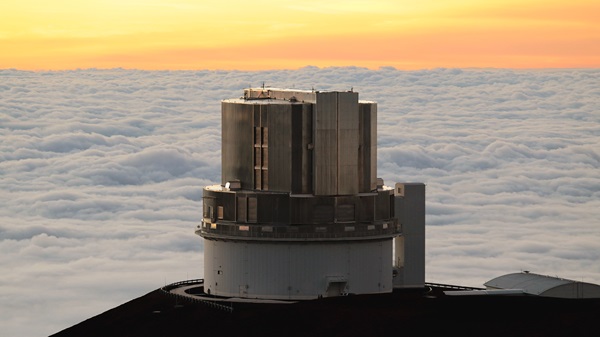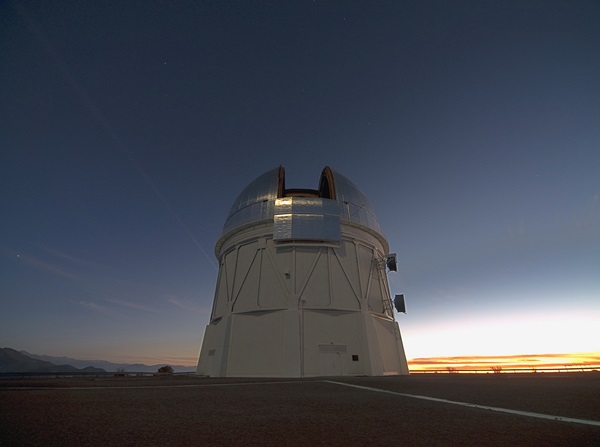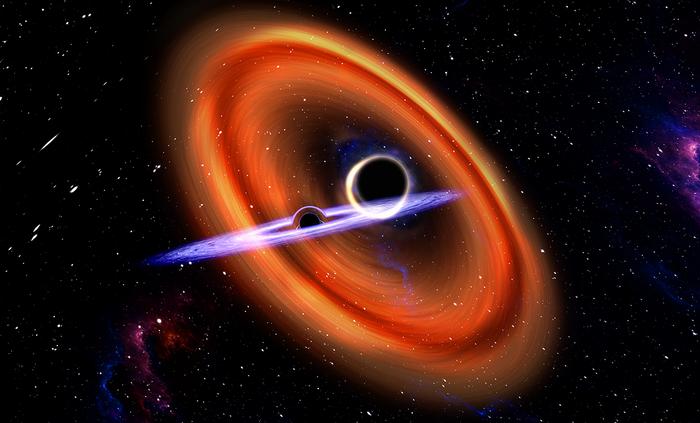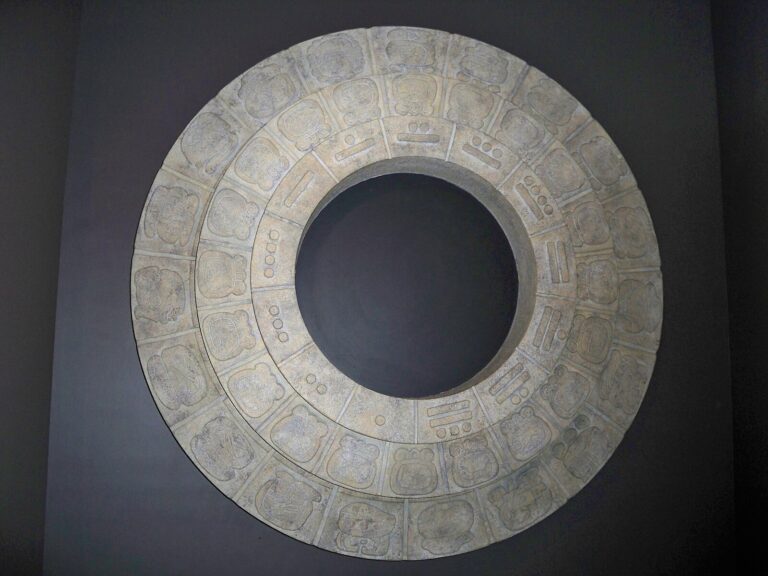Key Takeaways:
Just over a year ago, a trio of astronomers set a record for the most distant object ever discovered in the solar system. Because the small world was found more than three times farther from the Sun than Pluto, the team fittingly dubbed it FarOut.
But FarOut’s incredible distance of about 123 astronomical units — where 1 astronomical unit (AU) equals the average distance between the Sun and Earth — isn’t the only thing that makes this world intriguing. In recent years, the same group of researchers have uncovered a handful of other extremely distant bodies. And, much to their surprise, they have determined many of these objects make their closest approach to the Sun, or reach perihelion, at about the same point in space.
The researchers believe this growing list of clustered objects — which FarOut is suspected to be a part of — is the best evidence yet for the existence of an elusive world lurking in the outer fringes of our solar system. A world called Planet Nine.
Finding far-flung objects
Scott Sheppard and his team have made the news a lot lately for their ever-growing list of distant discoveries. This is because Sheppard, an astronomer at the Carnegie Institution for Science, and fellow astronomers Chad Trujillo of Northern Arizona University and David Tholen of the University of Hawai‘i, are carrying out the most comprehensive survey of solar system objects beyond Pluto to date. According to Sheppard, since the team’s survey began in 2012, it has netted about 80 percent of all solar system objects discovered beyond 60 AU.
But Sheppard and his team aren’t done yet. Over the next few years, they expect their survey to spot many more distant and faint trans-Neptunian objects (TNOs), which are frozen, rocky bodies located past Neptune in a region called the Kuiper Belt. “We have covered about 25 percent of the sky to date in our survey,” Sheppard says.
And although FarOut, which is thought to be about 310 miles (500 kilometers) wide, is almost at the observational limit of their telescopes, the larger the object, the easier it is to spot. So, Sheppard says, they should be able to detect few slightly bigger objects located even farther away.
Through their survey, Sheppard and his team are working to bolster the number of known distant objects like FarOut. This, they hope, will give them a better sense of what’s aligning the orbits of many of these far-flung bodies, possibly helping them finally track down Planet Nine.
Although Sheppard and his team are already pretty confident about FarOut’s speed (and therefore its distance), in order to confirm FarOut’s orbital path, they must first collect more images of it moving through the sky. “You need a year-long arc on it to actually get the orbit down,” Sheppard says. And because they don’t have a year’s worth of data for FarOut yet, he says, “we need another observation in November [2019] to actually get a reliable orbit.” At the time of this writing, Sheppard is eagerly awaiting the new November data.
But FarOut isn’t the only world that might help point the way to Planet Nine. In October 2018, the researchers announced the confirmation of another distant discovery called 2015 TG387, which, in the spirit of Halloween, they nicknamed The Goblin. Though the 200-mile-wide (320 km) icy rock was first seen about 80 AU away, it has a particularly eccentric orbit, which means it swings exceptionally far from the Sun. “The Goblin’s orbit is very large. It has a semimajor axis of some 1,000 AU,” Sheppard says, “meaning it takes some 40,000 years to go around the Sun once.”
Because of the time it takes The Goblin to complete a single orbit, the team required three years of observations after its initial discovery in 2015 to determine its exact path through the sky. But once they pinned it down, they learned the eccentric TNO comes to perihelion at nearly the same point in space as a handful of other noteworthy objects. These include the team’s earlier discovery of 2012 VP113 (which they nicknamed Biden as a nod to the “VP” in its designation) and Sedna, a dwarf planet roughly half the diameter of Pluto that was discovered in 2003.
It’s this recently identified pack of perihelion-clustered objects, which Sheppard refers to as “extreme TNOs,” that suggests an unseen and massive planet is hiding in the outskirts of our solar system.
The hunt for Planet Nine
With the advancement of powerful survey telescopes, as well as sophisticated software that can sift through massive amounts of data like never before, we are just now beginning to scour the distant reaches of the solar system for icy dwarf planets and the like. But the discovery of this peculiar class of extreme TNOs indicates that dwarf planets may not be the kings and queens of the Kuiper Belt. Instead, there’s a growing dossier of evidence that suggests a colossal world some five to 15 times the mass of our own planet is lurking far beyond, playing puppeteer to the oddly clustered collection of distant bodies.
“Based on the clustering of the objects we are finding that are way out there like The Goblin,” Sheppard says, “a super-Earth planet that is a few hundred AU away” could be shepherding them into position. Thanks to cutting-edge simulations, the researchers expect Planet Nine (sometimes referred to as Planet X), to be in a somewhat eccentric orbit that takes it about 400 AU from the Sun. But, Sheppard says, “the planet could be up to some 1,500 AU away in the more massive planet models.”
But if Planet Nine really exists, why does it orbit so far from the Sun?
That’s still a heavily debated question. “There’s two main theories for how the planet got out there,” Sheppard says. “The most likely scenario I like to call the ‘runt of the giant planet family.’ ” In this scenario, Planet Nine formed alongside Jupiter, Saturn, Uranus, and Neptune, which Sheppard says all likely began their lives within about 5 to 15 AU of one another. “There’s probably several Earth-mass-sized objects and bigger which formed in that area,” he says. As Planet Nine was forming, “it got to several Earth masses in size, but then it probably got too close to Jupiter and Saturn and got tossed outward.” This ended up pushing the still-forming Planet Nine out of the feeding zone, which stunted its growth before it could reach the size of a true giant planet.
Alternatively, Sheppard says, “it could be a captured object from another star system.” Because stars form out of massive clouds of condensing gas and dust, they are born in litters, not in isolation. So, early in the solar system’s history, the Sun was surrounded by many other nearby stars that all gravitationally interacted with one another. According to Sheppard, this means other stars “were tossing objects out of their solar system, so there was probably a lot of free-floating planets being ejected from all these different stars.” And if one of the rogue planets strayed too close to the Sun, there’s a chance it was seized by our own solar system, where it’s since remained.
There’s also a third possibility: the solar system was shaken up in its past by a wandering star. In research published last year, astronomers announced the discovery of an exoplanet named HD 106906 b, which they think was exiled into a large, perturbed orbit thanks to a pair of passing stars that strayed too close to its system. According to Batygin, it’s feasible that a similar process could have happened when the Sun was still near other stars from its birth cluster.
Proving Planet Nine’s existence
The problem with Planet Nine is that in order for us to be 100 percent sure it exists, we need to see it with our own eyes. Fortunately, Sheppard says, “our survey is designed to not simply find the planet, but to triple the known [number of] very distant objects. These very distant objects are the ones that are sensitive to the planet, and nailing down their clustering trends much better will better help us locate the planet and further show it is real.”
By even doubling the known number of extreme TNOs orbiting far beyond Neptune (which is currently a sample of about a dozen), researchers think they can tease out whether Planet Nine is really there or not. And, more importantly, an increased sample size may help them further constrain exactly where Planet Nine is in its orbit. But for now, Sheppard says, “None of the most distant perihelia objects with large semimajor axes obviously buck the clustering trend, but again, we are talking about only a little more than a handful of objects.”
However, “the planet hypothesis is the simplest and best explanation,” Sheppard says. “A massive disk might be possible, but we don’t see any massive disk out there, and if there were one, it would be harder to explain than just having one planet.” And as for the black hole theory, Batygin says, “the important thing to understand here is that all the calculations can tell us is the mass of Planet Nine, not its composition. So in principle, Planet Nine can be a planet, a potato, a black hole, a hamburger, etc., as long as the orbital parameters are right.”
So, although the existence and exact nature of Planet Nine is still up for debate, Sheppard’s team is currently carrying out the widest and deepest survey of the solar system ever to help find out for sure. “I always like to say it’s more likely than not that [Planet Nine] exists out there. I would say somewhere in the 80 to 90 percent range.”
“The primary reason why I’m so excited about this work,” Batygin says, “is because there’s a near-term opportunity for observational determination one way or another.”
But for now, Sheppard says, “It’s exciting to be looking at sky that no one has ever imaged as deeply as we are. It’s like Forrest Gump said: Each image we take is like a box of chocolates, you never know what you are going to find.”















